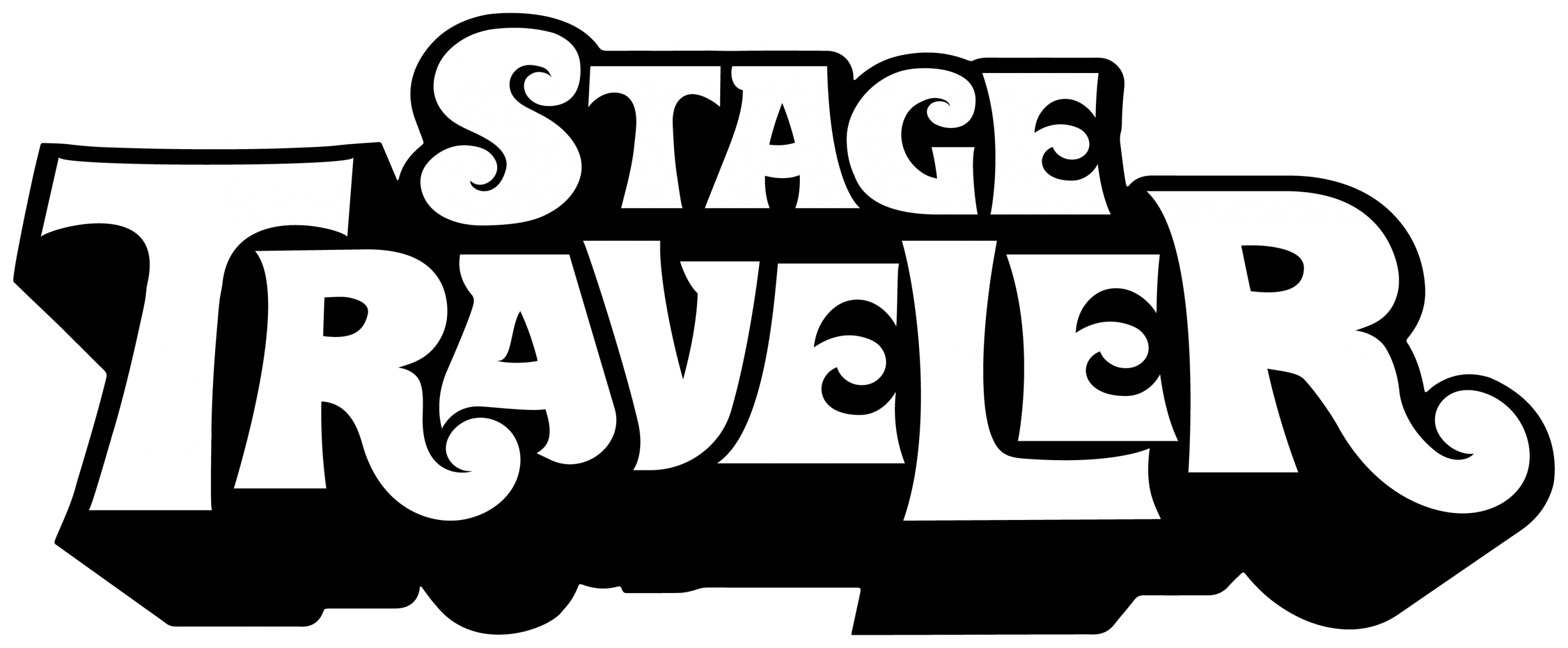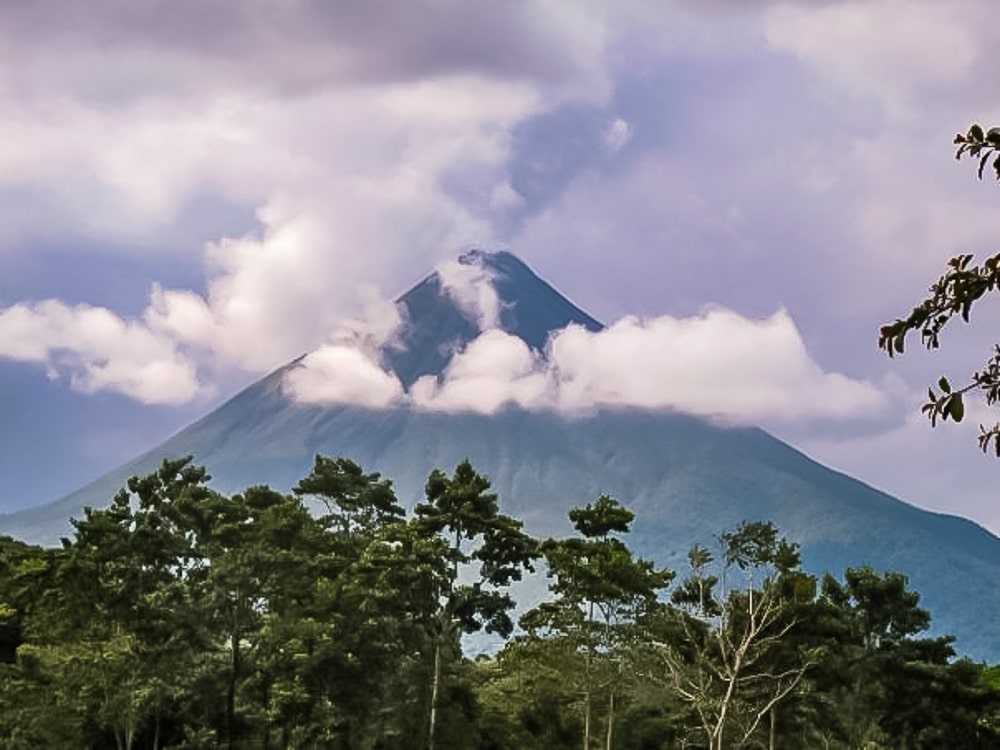EXPLORATIONS: SONIC HIGHWAYS

Corey Bell, Stage Traveler & Blogger
Dayvan Cowboys:
Boards of Canada & Other Masters of 'Eco-Electronica'
Part VI of
Sonic Highways: Musical Immersion on the Roads of America
I love the outdoors.
I am outside whenever it is humanly possible and for basically any reason whatsoever. Maybe it’s because I grew up in a house that had a huge backyard, or maybe it’s because I was in the Boy Scouts for over ten years. Then again, maybe it’s just a part of who I am, something engrained within my genes from a time before memory’s enigmatic reach.
I have lived in cities of varying sizes for the past dozen years or so. After leaving Connecticut at the ripe age of eighteen, I moved to New York, and subsequently to Brooklyn a few years later. At the turn of the decade I journeyed south to New Orleans, and after living la vie effréné for four years I followed in the tradition of manifest destiny and headed west to find my treasure in the Bay Area of Northern California. All three – in addition to my new of Asheville, North Carolina – happen to be great cities to be outside in. There’s something magical about walking around New York City in the autumn just as the air begins to nip at your earlobes, as is sitting by the mighty Mississippi River at Audubon Park in New Orleans, especially in the springtime as wafts from fresh magnolia blossoms float along the breeze and cartwheel through your nostrils, just as the wind tousles your hair like a friendly uncle. The Bay Area plays host to not only some of the most gorgeous scenery in the world, but also some of the best weather. Despite some bouts of drenching winter rains from November through February, the sun shines almost every single day for a good 70% of the year, with temperatures rarely venturing outside the norm of the 60°-80°F range, which is the ultimate comfort zone.
Unfortunately, on the contrary, summertime in both New York and New Orleans is pretty brutal. New Orleans, luckily, is widely air-conditioned, while New York seems to be lacking in this department, especially when you’re a twenty-something who is already struggling to make rent on an overpriced loft in Bushwick: the added costs of air-conditioning just don’t seem worth it. During these oft-unbearable summer days—especially in the midst of the weekly or bi-weekly heat waves that seemed unending—escape from the city was not only welcome, it was necessary. Luckily, I had family back in Connecticut and in New Jersey, as well as friends in basically all of the New England states that would offer me sanctuary from the oppressive city heat and accompanying stench of garbage being maliciously braised in urine.
I liked these drives back home or to my friends’ homes in Massachusetts or Vermont because I could watch the environment around me change right before my very eyes. The temperature would almost instantaneously drop as soon as I crossed out of New York State, and the tangled concrete melted into green fields and leafy oaks and maples. A wave of relief would wash over me every time I would leave the city, and at first, I thought it was because of the cooling temperatures. I came to discover that the relief I was feeling was because I was getting back into nature.
Going into my fifth and ultimately final year of living in New York, I decided to get away from the city for an extended amount of time to “find myself” in nature. Connecticut wasn’t going to quite do it for me, nor would anywhere in the states for that matter. My father suggested I look for some volunteer work outside the U.S., so I could enter the experience with a clean slate, so I chose Costa Rica.
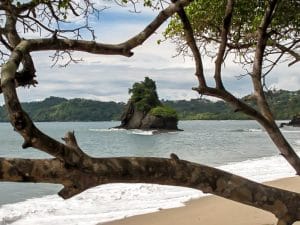
The peaceful tranquility of Manuel Antonio is a dramatic backdrop for ambient music.
During my time in Costa Rica, I of course connected with the natural beauty of the country within the rainforests, the beaches, and the high mountain “cloud forests.” I worked two jobs during my six-week tenure and established a rapport with my natural surroundings that for so long I had wanted. At the same time, I became enraptured in a genre of music I had given only a sideways glance in the past, as it seemed to echo and flow through and amongst my natural surroundings, adding to them some remarkable new element. It was ambient music, namely the ambient electronic duo Boards of Canada.
Ambient electronic music is a genre that has been toyed and experimented with ever since the invention of the synthesizer, basically. Brian Eno, formerly of the glam rock outfit Roxy Music—and since a pioneer of all things ambient—was the first to formally introduce the genre of ambient music. Even as a student, he always sought to push the envelope in regard to experimental/avant-garde music. One project that stands out is something he titled “Piano Tennis”, in which he bombarded aligned, stripped pianos with tennis balls in a demonstration of music’s relationship with intention and chaos. After leaving the band he founded (Roxy Music) in its sapling years and producing a few solo albums (Here Come the Warm Jets, Before and After Science, etc.), he devoted his career to the practice of ambient electronica.
His first ambient work, the aptly titled Discreet Music, was, for lack of a better word, revolutionary. In this work, Eno embraced minimalist ideology that offered a groundbreaking perspective, embracing a kind of subtlety that most Western music had chosen to ignore, instead placing it in the limelight. With such subtlety, Eno was able to weave intricate melodies and harmonies without using classical structure, emphasizing certain elements in certain sections before slyly pulling them back to focalize other melodies and harmonies that lay dormant at the piece’s beginnings. This called attention from audiences that were confounded yet altogether fascinated, as something like this had never really been done before.
After Discreet Music, Eno began work on what is now commonly known as his Ambient series, the first being Songs for Airports. He based this work on the necessity of a soundtrack for even the most mundane activities in our lives—including time spent at airports—and the album was composed as an alternative to the kind of cringe-inducing Muzak heard at such ports-of-call. This was also perhaps the first instance a piece of music was created for a specific space (other than those written for certain opera houses or symphony halls), and although Songs for Airports is rarely heard in the many hubs that pepper our world’s landscapes, it is an important statement on music and environment, as it utilizes one’s personal experiences and the general public’s perspective as a tool for composition.
Since then, many have delved into such musical practice, using environmental cues as powerful inspiration in the synthesis of such music. Icelandic ambient post-rock outfit Sigur Rós not only uses the staggering diversity of their home country’s landscapes as influence for their music, but also the naturally occurring elements and materials. In the excellent concert-documentary film Heima—in which Sigur Rós plays a series of free concerts in several parts of Iceland following their 2008 world tour—one band member is seen constructing a complex marimba out of volcanic rock. Another Icelandic native—the ever-enthralling Björk—based her entire 2011 album, Biophilia, on naturally occurring phenomena.
Perhaps the most devoted to natural influence, however, is the duo Boards of Canada, whose ambient electronica takes the very form of audible nature within the complex and often jarring soundscape of their material.
These two Scottish brothers—Mike Sandison and Marcus Eoin—have only made four full-length albums in the past two decades or so (their fourth was released in 2013). Music mythology boasts the theory that the two brothers constantly backpack across great distances of natural landscape that greatly influence their “organic” electronic sound, permitting the synthesis of haunting, ethereal masterpieces. Though they have only produced these four full-lengths (amidst a flurry of EPs and singles), BoC are already revered as modern musical royalty, reigning over the fragile realm of ambient music.
Taking cues from pioneering classical ambient masterminds—such as Brian Eno—and the majesty of nature itself, they orchestrate beautifully constructed musical landscapes, echoing the delicate juxtaposition of serenity and intensity that their supposed muse—the natural landscapes of Earth—exhibits, with unparalleled grace. Boards of Canada captures the essence of the natural world in an empathetic and accessible manner that is unlike any other.
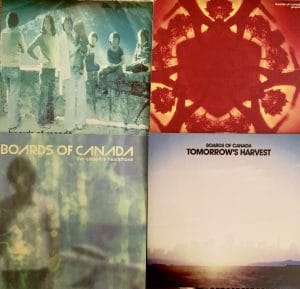
Boards of Canada's LP catalog; clockwise from top left: Music Has the Right to Children (1998), Geogaddi (2002), Tomorrow's Harvest (2013), and The Campfire Headphase (2005).
Over the course of the band’s catalog, BoC has nestled into a niche/genre I like to call “eco-electronica” (this may not be a proper term, but with all the new genres popping up all the time, who’s to say that my classification is any less valuable than those boasted by some overly self-indulged blog gurus that hand out new genre terminology daily to whatever new-ish sound comes their way? But I digress…). Their first complete effort, skillfully titled Music Has The Right To Children, is a triumph, as it diligently mirrors natural beauty through music, forging a tangible bond between man and Earth that reverberates through the medium of ambient electronica with rare sincerity. This sample-heavy debut from the Scottish duo resonates with oft-unspoken ideals relating to a return to organic sound, and though sometimes odd and admittedly jarring (especially in terms of the sampled material), the eighteen tracks that make up the album carry an eerie confidence, tempting the listener to respond. And while some of the tracks may seem random and sometimes (though rarely) somewhat unfounded, the unabashed, subtle dignity of the album flows dreamily throughout. Such originality has yet to be challenged.
BoC’s sophomore effort, the magnanimously peculiar Geogaddi, boasts a darker side of the duo’s enigmatic talent, yet is similarly celebrated as a grand achievement in modern electronica, as is its fraternal twin, 2013’s Tomorrow’s Harvest. While this most recent effort boldly exhibits a grand leap in the duo’s willingness to expand and explore, it still holds true to their earlier albums. It rivals Geogaddi in inherent creepiness and uneasy (yet ultimately rewarding) poetic dissonance, yet still finds its footing as an honorably classic BoC album, as much of the techniques and melodies echo their debut masterpiece. However, it is BoC’s third full-length album, The Campfire Headphase, that is perhaps the bravest and most genuine effort put forth by the fraternal Scottish duo to date.
So, there’s this song that I love. A lot. It very might well be one of the most important songs that I have ever heard—no, experienced. Ever. And by ‘ever’, I mean it. It is quite possibly the most beautiful song I have ever heard. It has affected me on so many levels, in so many instances, that I can honestly say that it has impacted me more than any other piece of music. I’d even go as far as to say that it is the song that I want to be played at my funeral.
Seriously, this is that kind of song. At least, to me it is.
The song in question is called “Dayvan Cowboy”, and it is featured on the aforementioned Campfire Headphase.
The first time I heard Boards of Canada’s Campfire Headphase, I was a bit surprised. I had heard the song “Dayvan Cowboy” before hearing the actual album, as it is the leading track on an EP the band released some months after Campfire, entitled Trans-Canada Highway, which was the first of the band’s releases I heard. I heard it for the first time during the final leg of a long car ride, driving down Manhattan’s West Side Highway on the way back from a weekend at my friend’s country house in the Berkshire Mountains of southwest Massachusetts.
I immediately fell in love with “Dayvan Cowboy.” It haunted me then and continues to do so to this day. It doesn’t haunt me in the way that’s bad or icky or creepy, it is strikingly beautiful; but it always stays with me for several hours after listening to it. Even amongst the deluge of new Boards of Canada songs that washed into my ears after that initial listening, “Dayvan Cowboy” still rang truer in my mind than any other BoC piece, or any other instrumental piece for that matter. So, I began to wonder why.
The quality of this song that is perhaps the most remarkable is that it is almost nothing like the rest of the band’s catalog. This may sound strange, especially coming from someone who trumpets the praises of Boards of Canada whenever and wherever he can, yet there is something about it that transcends the rest of their music. Most of BoC’s music is heavily reliant on odd vocal samples and syncopated synthetic percussion—which I love, mind you—and of course, there’s nothing wrong with that. It’s one of the main reasons I love them so much: that kind of music speaks to me very efficiently and very clearly.
"Soon the moan grows misty and vague, and then disappears gently and gracefully with the synths into a fog that envelopes the soundscape like a sonic blizzard of noise."
“Dayvan Cowboy”, however, is somewhat of an anomaly. First of all, it is waaaaaay mellower than a lot of their material (if anyone reading this is familiar with Boards of Canada but has never heard “Dayvan Cowboy”, this may seem like somewhat of an impossibility, but trust me, it’s true). While most of BoC’s tracks redeem trippy ethereal synths and hodgepodge vocal samples, this track dares to seek new territory. It is one of several BoC songs that abstain from utilizing any vocal talent at all, relying entirely on instrumentation. Yet that’s not what sets it apart.
The structure of the song is nothing short of incredible. It begins with an almost scatterbrained quality, as if the music itself is unsure of where to begin and how to build upon itself. Slowly, the shimmery synths find their rhythm, backed by a comforting, electronic lullaby-like moan and a wistful tambourine-like rattle. The wailing grows louder, building confidence in itself, meandering brightly through a luminous orchestra of synths that ebb and flow amongst each other like deep-sea currents. Soon the moan grows misty and vague, and then gently and gracefully disappears with the synths into a fog, a cloud of sound that envelopes the entire soundscape in a sonic blizzard of noise.
And then, it all just bursts.
The whirlwind of sound heard in the first leg of the song suddenly, yet gracefully pops like a giant iridescent balloon, spilling out waves of reverberated guitar-like riffs, soon joined by an aurora of percussion and silky strings, the playful mist swirling around it all in ecstasy, momentarily punctuated by the pointed laughter of synthesized alto piano. Soon it is a frothy, delightful ocean of sound, bobbing and weaving and breaking in perfect harmony. And then, almost as suddenly as it began, the excitement of the sea quiets to a murmur, and quietly lulls to a bittersweet end.
One of the reasons this song is so important to me—beyond it being beautifully written, and possibly being my favorite song of all time—is that it translates so well within the kinds of breathtaking natural environments that I myself seem to thrive in. I’ve listened to this song during many significant encounters with nature: watching the waves lap at the porous lava beaches of Hawaii as the sun sets, driving through an endless summer maze of green leaves on the Blue Ridge Parkway, slithering northward along the Pacific Coast Highway as the California bluffs glow in the dying twilight...
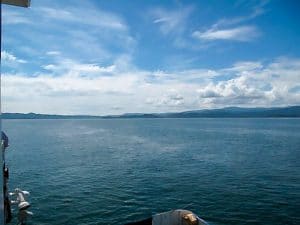
Just one of the many views from the Nicoya/Puntareñas ferry in Costa Rica.
“Dayvan Cowboy” was one of the main songs that put me to sleep every night while I was in Costa Rica: I would stare at the moon through the fingers of the palm trees, and the smooth, tide-like sounds of Boards of Canada would whisper and giggle to me, gently singing me to sleep. It would affect me during the day too. I remember sitting on the roof of a ferry that crossed the gulf of Nicoya, listening to “Dayvan Cowboy” and watching a seagull glide swiftly through the sky, dipping and hovering. It matched up perfectly with what I was listening to. It was as if the bird was dancing to the music, yet it couldn’t even hear it. It simply seemed appropriate for that particular moment. It didn’t matter if the bird could hear the music or not; I could imagine what the artists were observing when they wrote the song, and I imagined a similar image. As the song grew stronger, more birds came into the picture. I was astounded. It was like watching a real-life music video.
People often reference certain things that have altered their outlook on life. For some it’s a book they’ve read, or a movie they’ve seen, or a speech they’ve heard that triggers such a drastic shift in values. For me, it was one five-minute-long song, by two Scottish brothers that I have never met—and probably never will—who wanted to write an instrumental piece about a surfer who jumps out of a plane, or that’s what I can safely assume, and you will understand what I mean if you ever see the music video (that, and that’s what the term ‘dayvan cowboy’ actually means). I could say, “Sounds crazy, right?” But I know it’s not. You know as well as I do that art speaks differently to everyone, and this song speaks to me. Though both the motive and intent involved in creating this song interest me, they’re not the most important things.
All I know is that I love listening to this song, particularly during moments of quiet contemplation when I am lost in the gratitude I have for the simple things I am blessed to experience and enjoy. There are those that say the ‘digital world’ we live in constantly disrupts the natural order of things; that being ‘plugged in’ takes away from the joys of everyday life, such as our natural surroundings. In most cases, I would agree. Yet there is something about hearing a truly wonderful song such as this on a beach on a night with a full moon, the kind that shimmers on the surface of the sea like the dust of a pearl on black velvet. To me, it is wondrous.
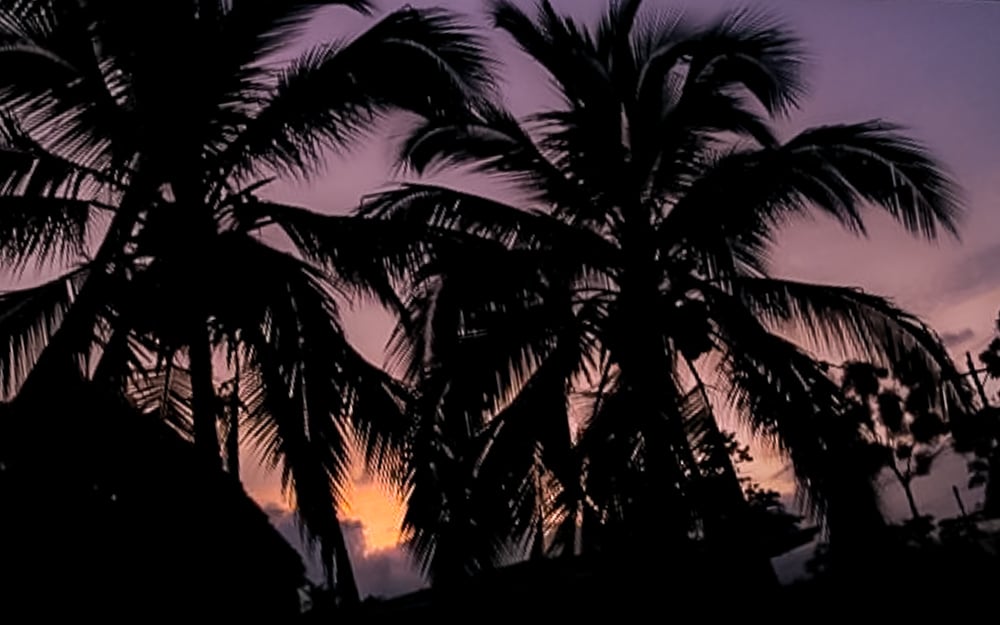
A murky sunset in the depths of Hojancha.
Obviously, it’s kind of presumptuous for me to expect everyone to have the same reaction to this one song as I do. Individuality and personal opinion is what makes music interesting, as it provokes a sort of debate in which people can wax poetic on how certain music affects them. Also, I don’t mean to devalue the rest of the band’s impressive catalog; each of their albums (and the individual songs contained within) is wonderful in their own way. When I was at the nature preserve in Costa Rica I sometimes would listen to Music Has The Right To Children on headphones placed on my pillow next to my ears as I lay down to sleep, so that I could also take in the pulsing of the tides and the late-night cacophony of the surrounding forest, seeking moments in which the music would resonate with my current environment. Geogaddi will always remind me of lying awake in bed in Brooklyn, trying to drown out incessant humming of halogen streetlights and the endless noise of the Boar’s Head factory next door. Even their most recent release—Tomorrow’s Harvest—has already seeded a special place in my heart, offering up a chilling and invigorating soundtrack to writing pieces such as this in my apartment back in New Orleans, as I would use it as a tool to drown out the intermittent disjointedness of the off-and-on patterns of my building’s air conditioning. Basically, all of Boards of Canada’s music has left an impression on me in its own way, yet the roots of the music stay true: this is music that speaks to a more natural, instinctual way of life, conjuring powerful images of leafy glades and misty mountaintops.
I feel that, if implemented properly, the right music can enhance many a natural encounter. And that’s why I love this song, and this band and that’s why it (and they) appears on almost every nature-based playlist I have ever created. It lifts me up to the clouds, and I sail along the breeze, gently carried by the tender melody to a state of unparalleled bliss. Maybe there’s a song that does that for you too.
And do you know what the best part is? It’s one of the few things that no one can take that away from us. It is eternal in our minds and our hearts and our memories, never to be touched by another living soul.
I think that’s pretty rad.
